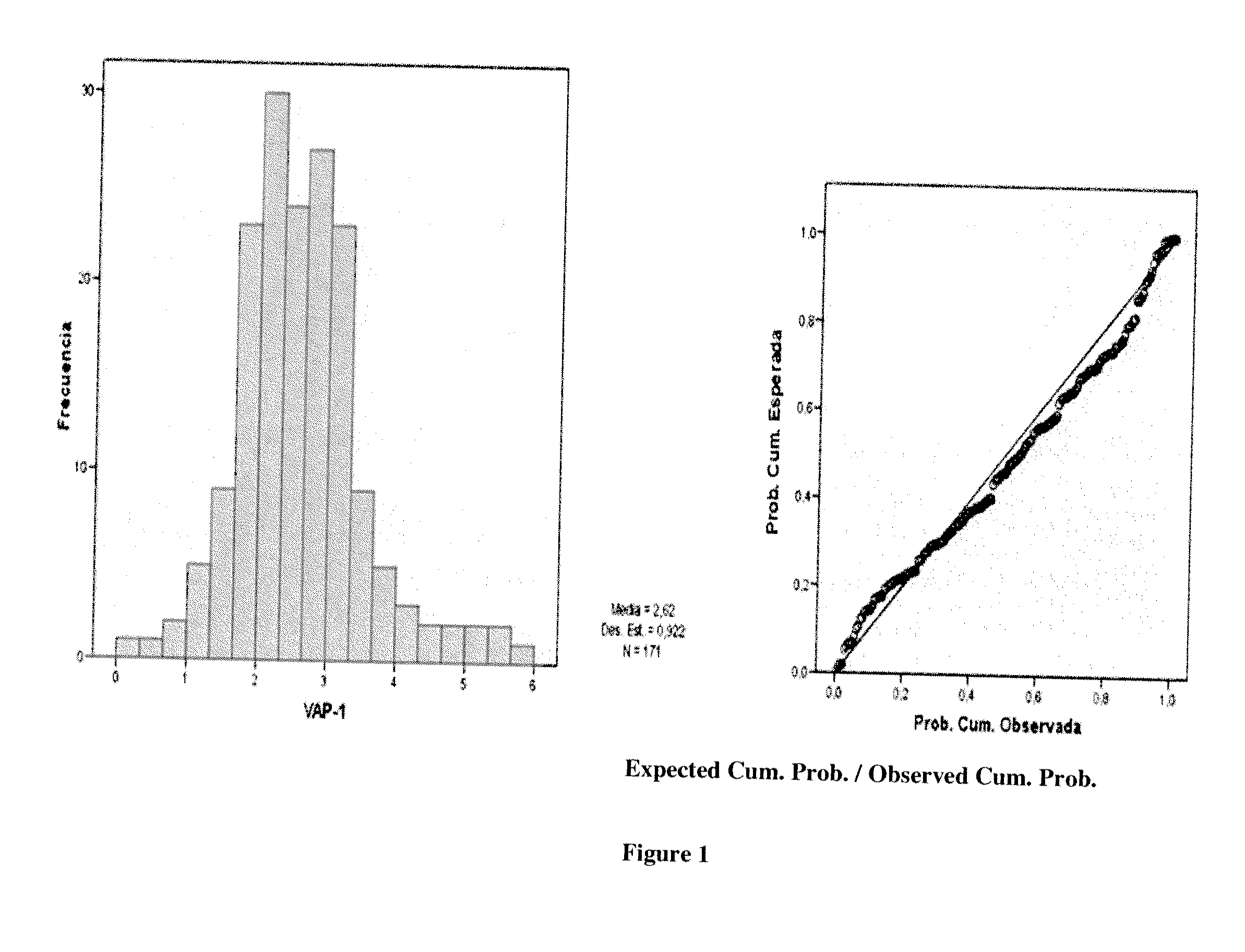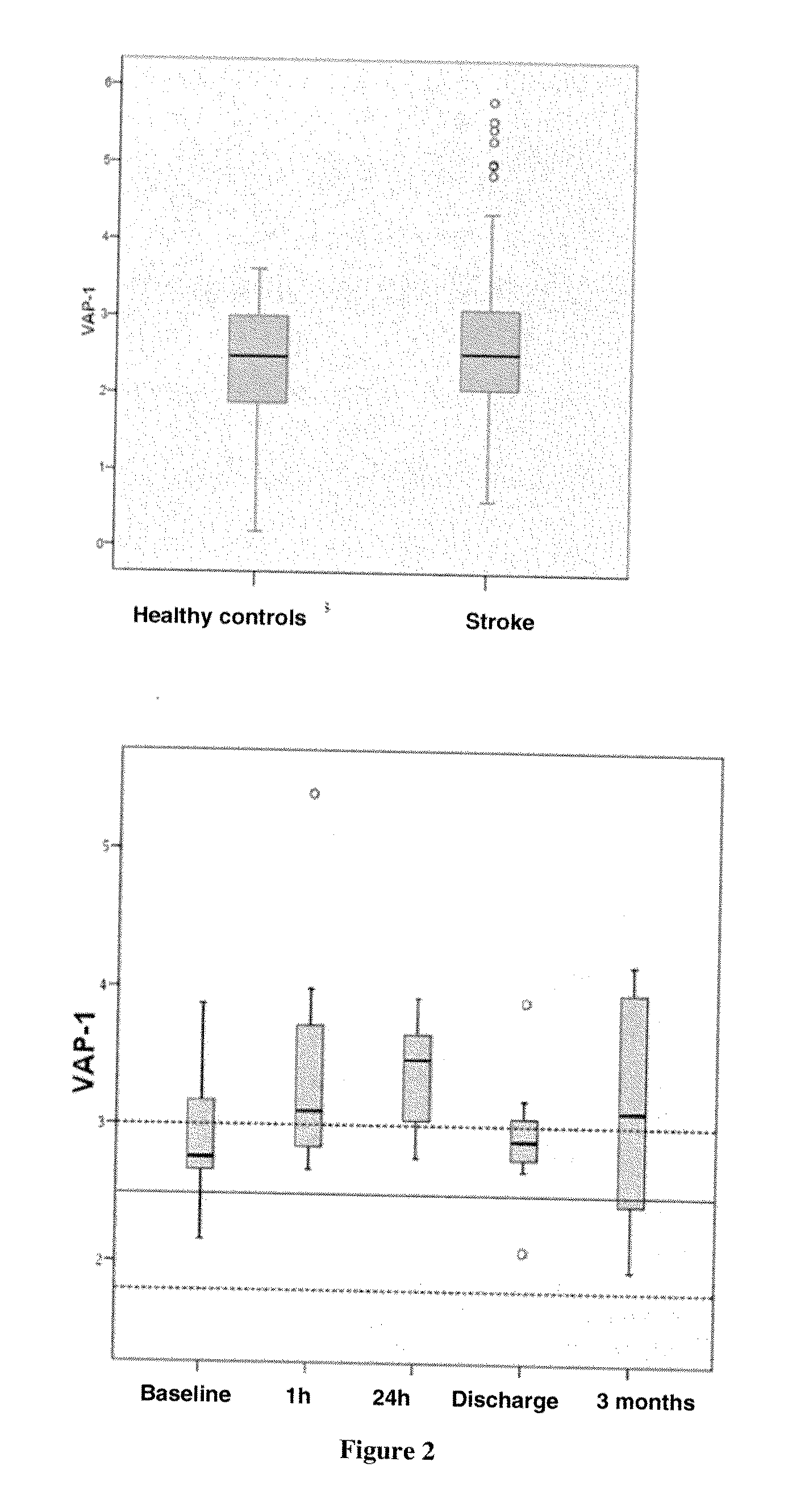Methods and compositions for the treatment and diagnosis of haemorrhagic conversion
- Summary
- Abstract
- Description
- Claims
- Application Information
AI Technical Summary
Benefits of technology
Problems solved by technology
Method used
Image
Examples
example 1
Methods
Study Population
[0135]Patients admitted to a university hospital emergency department with symptoms of acute stroke were prospectively studied. The target group consisted of patients who had been hospitalized for ischemic stroke within the first 3 hours after onset of symptoms. A total of 141 consecutive patients with nonlacunar stroke involving the vascular territory of middle cerebral artery (MCA) or basil artery were enrolled. All patients were subjected to urgent evaluation of the arterial tree by transcranial Doppler (TCD) ultrasound. Patients received t-PA at a standard dose of 0.9 mg / kg (10% by rapid intravenous injection and 90% by continuous infusion for 1 hour). Patients with known inflammatory or malignant disease were excluded. Finally, 140 patients were selected to undergo examination.
[0136]In addition, from the plasma library of tPA-treated patients (n=xx), 40 of these patients who had developed parenchymal hemorrhage and matched (by age, gender, etiology and ex...
example 2
[0145]A total of 140 patients (46.1% women) with acute ischemic stroke were included in the study. Many of these patients showed involvement in MCA territory (n=132) and the remaining patients showed basilar artery occlusion (n=8) or posterior cerebral artery occlusion (n=1). Mean age was 70.85±11.8 years age (range 36-92 years). A total of 54.7% patients were hypertensive. 31.4% were dyslipidemic and 19.3% had a history of diabetes mellitus. NUBS score was 17 on admission (score range 3-29). TCD baseline detected a proximal MCA occlusion in 65.7% of the patients and a distal MCA occlusion in 34.3% of the patients. As far as stroke etiology is concerned, 45.7% of the patients had cardioembolism and 25.7% of the patients had atherothrombotic stroke.
[0146]Stroke patients had a mean baseline VAP-1 activity level=2.66, which was similar to VAP-1 level in healthy control subjects=2.40 (p=0.17, FIG. 2). Temporal VAP-1 profile after stroke is shown in FIG. 2. The highest VAP-1 level was fo...
PUM
| Property | Measurement | Unit |
|---|---|---|
| Fraction | aaaaa | aaaaa |
| Fraction | aaaaa | aaaaa |
| Fraction | aaaaa | aaaaa |
Abstract
Description
Claims
Application Information
 Login to View More
Login to View More - R&D
- Intellectual Property
- Life Sciences
- Materials
- Tech Scout
- Unparalleled Data Quality
- Higher Quality Content
- 60% Fewer Hallucinations
Browse by: Latest US Patents, China's latest patents, Technical Efficacy Thesaurus, Application Domain, Technology Topic, Popular Technical Reports.
© 2025 PatSnap. All rights reserved.Legal|Privacy policy|Modern Slavery Act Transparency Statement|Sitemap|About US| Contact US: help@patsnap.com



